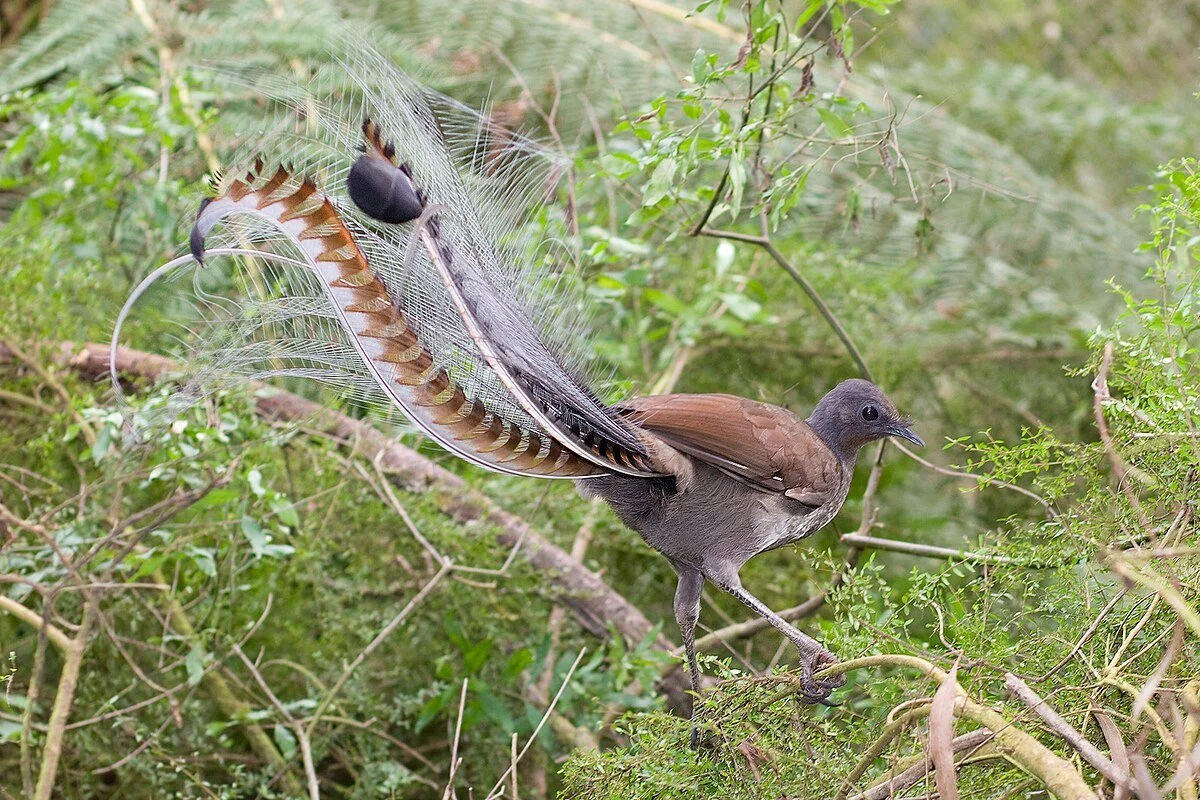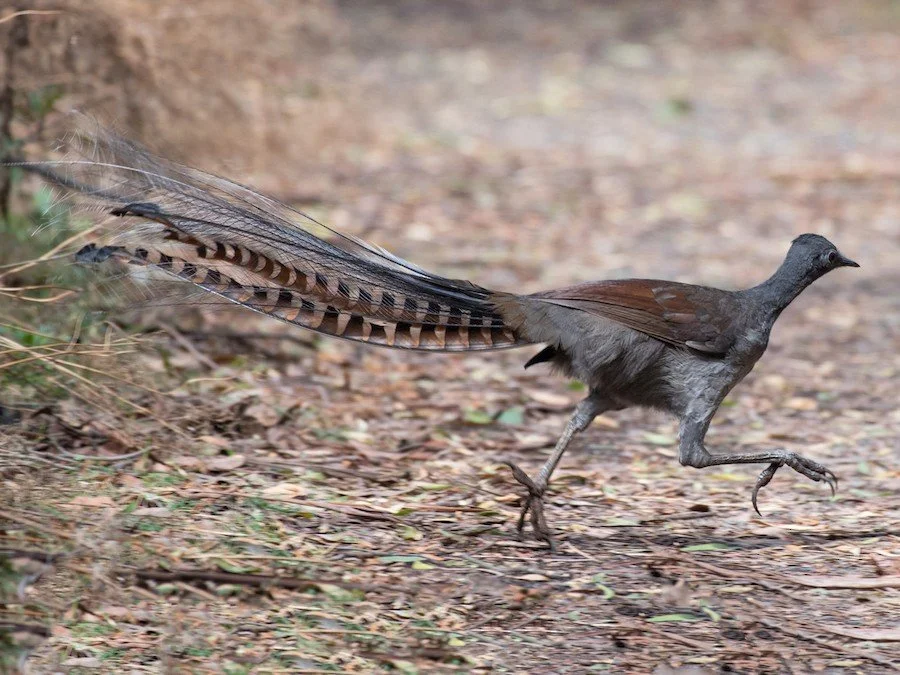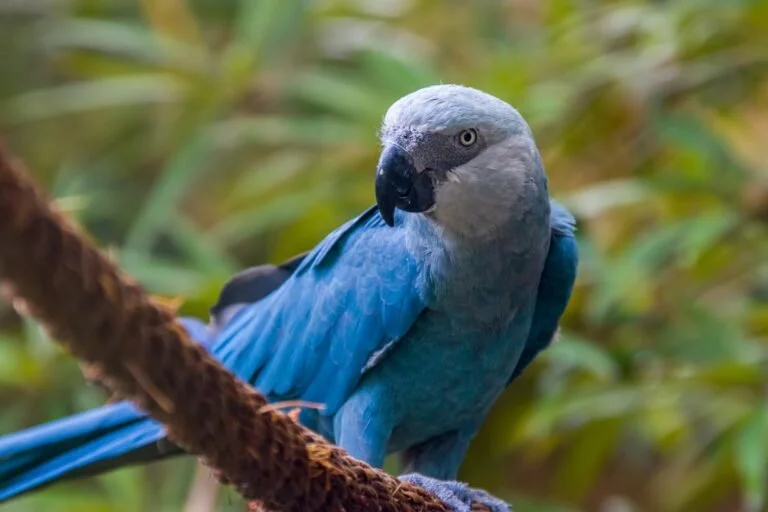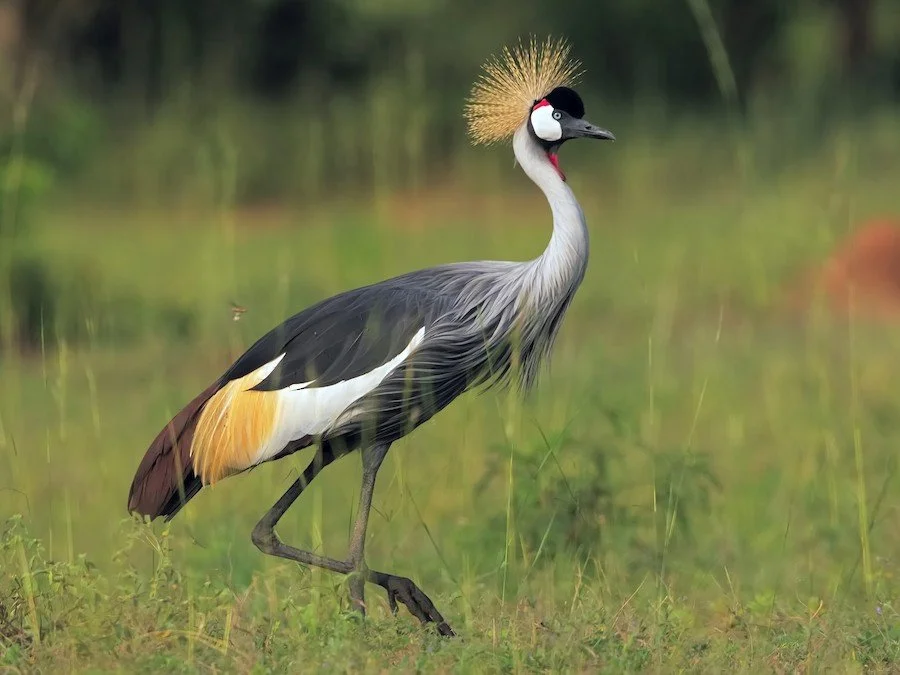Superb Lyrebird
Menura novaehollandiae
With a tail like a harp and a voice like the forest itself, the Superb Lyrebird is one of Earth’s greatest mimics. Found in the temperate rainforests of southeastern Australia, it can imitate everything from kookaburras to camera shutters. Though once hunted and displaced, habitat protections have helped populations recover—yet logging and fire still threaten their song. The Lyrebird reminds us that when we lose a forest, we lose its memory.
Least Concern
Population: 700,000 (fragmented)
Years Until Extinction: 30 - 40 years
Habitat
Wet sclerophyll forests, temperate rainforests
Main Threat
Logging, fire, habitat fragmentation
Description
Brown-plumed with a fan-like tail that curls into lyre shapes. Males sing from raised perches, mimicking dozens of species and sounds with eerie, near-perfect accuracy.
Wingspan: 30 inches
Diet: Insects, earthworms, seeds
Nesting: Ground nests made of sticks and moss
Mating: Vocal mimicry and tail fan dance on a cleared stage
The Superb Lyrebird, native to Australia’s forest floors, is famed for its astonishing vocal mimicry and ornate, lyre-shaped tail used in complex courtship displays. With earthy browns and grays, the dance channels this artistry with intricate foot rhythms, expressive arm layering, and tail-inspired sweeps of movement that mimic both imitation and visual spectacle.
Lyrebirds can mimic chainsaws, camera clicks, and other birds—sometimes stringing 20+ impressions into one performance.
Learn the Dance
Choreography Suggestions:
Tail arc: arms sweep overhead into a tall curved “lyre” frame.
Scratch step: light foot scrapes in alternating patterns.
Mimic pops: quick head tilts with small gesture quotes
Playful and nimble; brisk phrases with cheeky mimetic bursts.
Not a dancer? Co-create with AI!
Costume Ideas: Warm brown top with delicate back ruffles; thin wired “tail” arc attached to belt.
Prompt Ideas: Dancer channels a superb lyrebird: overhead lyre-arc arms, gentle foot-scrapes, quick mimic-like head tilts and hand cues; warm brown costume with light back ruffles; ferny forest backdrop







